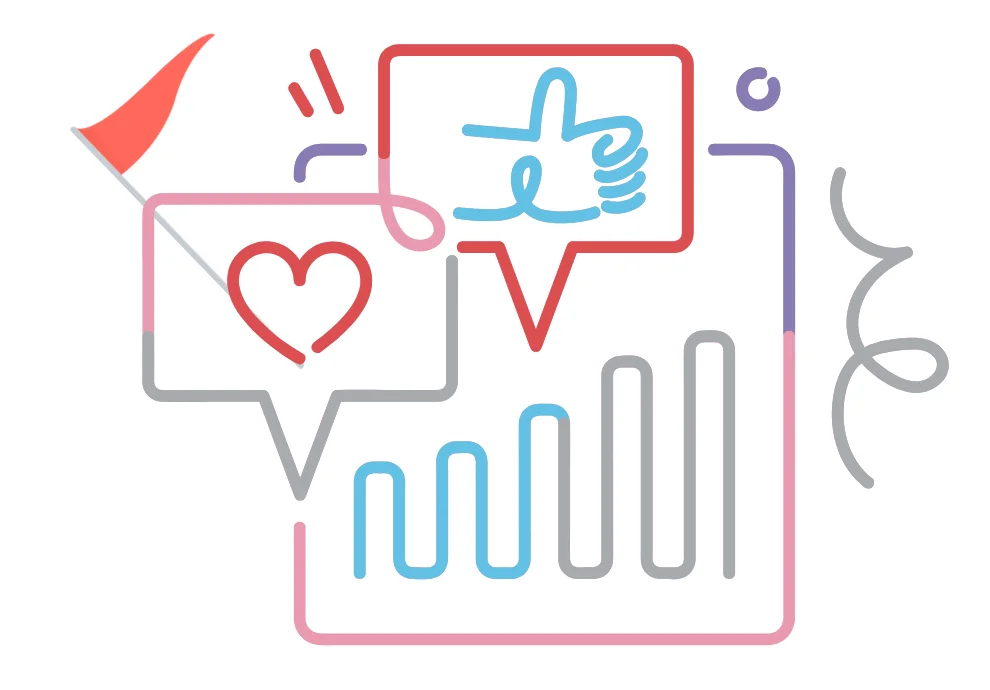Just like dark clouds on the horizon hint at rainy or even stormy weather, there are specific warning signs in social media analysis that imply the following for brands: “Something unpleasant has happened” or “Something terrible is going to happen.” If you brush them aside, they can capsize your social media marketing strategy — in the best scenario. In the worst — they can tear your business down.
How can you notice and address all the red flags in social media analytics?
No worries. We’ve created this guide as a mini-map that pinpoints social media threats.
But let’s first start with the most typical metrics companies track across social networks.
General Indicators in Social Media Analysis
When analyzing social channels like Instagram, Pinterest, Tumblr, YouTube, or others, brands collect, measure, and interpret valuable data to make better marketing decisions.
This information touches upon:
- Demographics
- Reach
- Engagement (likes, comments, views, reposts/shares)
- Referral traffic
- Ad performance
- Sentiment (positive/negative/neutral)
- Competition, etc.
Some metrics are impossible to track without social media analytics tools, such as Onlypult, Keyhole, Hootsuite, or the like.
For example:
With Onlypult, you can visualize your audience’s activity by hour or capture demographic factors like age, gender, or language, among other things.
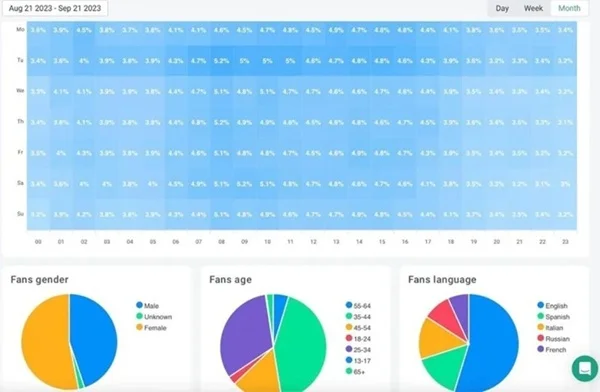
At the same time, others may be quite apparent to the naked eye, especially if you operate in a very narrow niche.
Let’s say you develop ERP software. While using LinkedIn for business, you decide to perform a social media competitive analysis. You simply sort out LinkedIn posts with the #erpforsteel or #steelerp hashtag, and—Eureka!—you figure out how your competitors win over their B2B audiences. For instance, one of them leverages LinkedIn trends, namely, live webinars, each gathering 100+ attendees = prospective customers.

That’s a clear (and good!) sign of a successful marketing hack to learn from your competitor.
But what can be the cautionary signals to watch out for when you analyze social media?
Let’s find out.
Top 5 Red Flags in Social Media Analytics
Consider the most alarming signs in social media analytics that, if left unnoticed, might have the most devastating effect on your social media presence.
Red Flag #1. Loss of followers
Follower count is among the top social media metrics to keep a hawk’s eye on.
And guess what? You may easily track it with Onlypult. Look at this graph demonstrating the follower count changes for Instagram as an example.
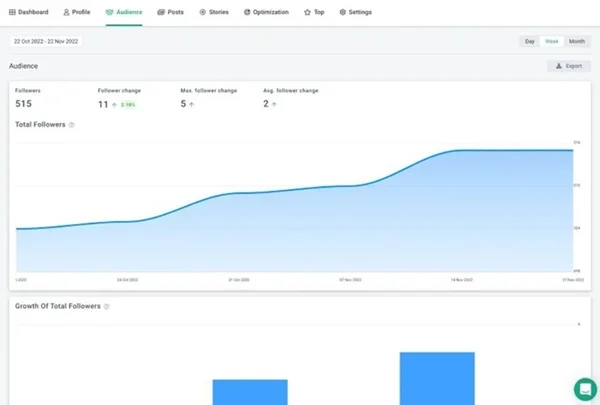
In this screenshot, everything looks fine, and the follower growth rate is steady. But what if you pour energy and time into gaining followers and suddenly notice that your follower base has shrunk?
In some cases, follower fluctuations may be seasonal or event-driven, especially if your brand is closely linked to a particular holiday or season.
“Tracking follower fluctuations isn’t just about numbers; it’s about audience alignment. A sudden drop could indicate a mismatch in content relevance or over-promotional posts. To address this, pinpoint where engagement slipped—whether in specific post types or during particular campaigns. Regularly analyze follower retention patterns and recalibrate content strategies accordingly to ensure audience engagement remains robust.” - says Rodger Desai, CEO of Prove.
For instance, @wintervibesx once lost roughly 800 TikTok followers in just two days. The reason? Christmas was over, and people switched their attention to other things.
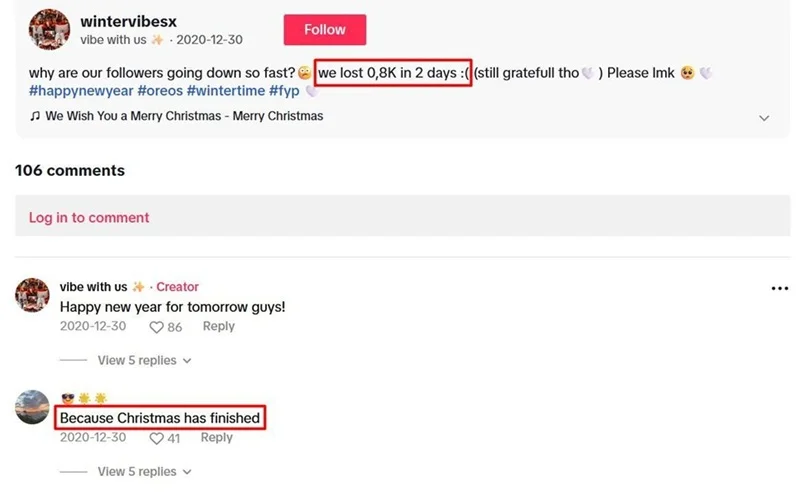
However, it’s not always that straightforward. The most typical causes of a sharp decline in followers are:
- Inconsistent posting schedule (posting too randomly or over-posting)
- Niche misalignment
- Rebranding
- Poor-quality content (pixelated or blurry visuals, boring captions, etc.)
- Controversial or offensive posts
- Too much self-promotion
Note: 45% of social media users unfollow brands if they indulge in overly promotional tactics.
Red Flag #2. Fake, bot-like, or inactive followers
Although we’re still far from entering spring (winter is coming!), it’s never too early to do a spring cleaning in your follower list. You’d better do this regularly. Here’s the rationale behind doing this right now. Followers from fake or bot-resembling accounts may dramatically distort your social media analytics results, undermine your brand’s credibility, and spam-message your brand via DMs.
Learn from Little Life Studio and say bye-bye to all the bots: track suspicious accounts and delete bots whenever you notice them flooding your profile and direct messages. The brand deleted 2,624 spammy or irrelevant Instagram followers.

Meanwhile, inactive followers can hold back your brand reach and user engagement on social media.
That’s what actually happened to Tom Hiddle (@tomhiddleofficial), a men’s apparel company. The brand had to remove 115 flagged accounts on Instagram to boost reel performance and engage more effectively with active users rather than squandering time and efforts on inactive ones.
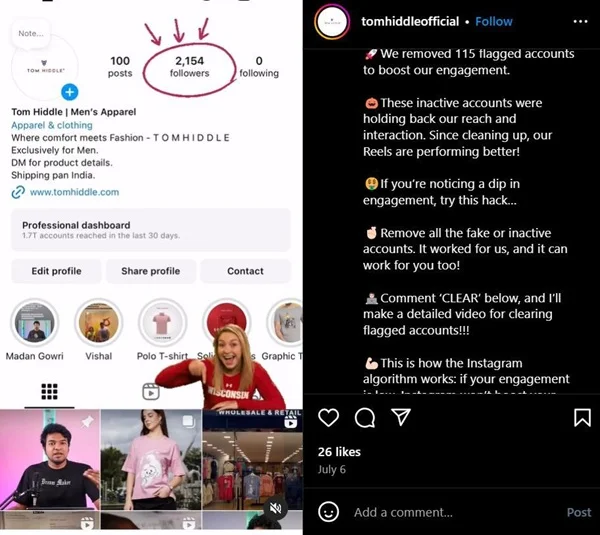
Red Flag #3. Drops in post and ad engagement rates
A drop in the post’s engagement rate
When monitoring your social media engagement, you may notice it fluctuates from post to post. Yet, at times, it may sag or even fall to zero.
Again, the reasons for this may vary, from your content mistakes and penalties like shadowbanning (take shadowban on TikTok or Instagram) to the platform’s algorithm changes (Facebook and Instagram frequently do that).
You might need to revisit your social media posts to understand the most popular type of publication and discover what content fails to engage your audience and why exactly.
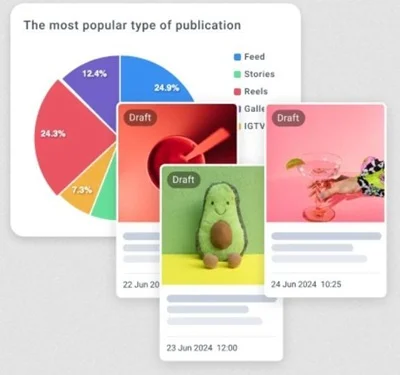
Then, adjust your social media content calendar to pick up your engagement level from the bottom.
A drop in the ad’s engagement rate
“If you have recently shortened your advertising budget for social media, naturally, your reach will shrink. In turn, you’ll get fewer impressions and clicks,” Max Tang, CMO at GEEKOM.
However, aside from this obvious reason, he also cautions against the so-called “ad blindness” leading to a low engagement rate even in targeted ads. “Frequent exposure to the same advertisement triggers ‘ad blindness.’ Users subconsciously ignore ads they’ve already seen multiple times.”
So, you may need to diversify your social media ads. Remember to add catchy visuals and evoke emotion (which is a great engagement booster, btw).
Check out this “killer” Facebook ad from Infograpia. It has garnered over 400 comments, 1K shares, and 20K likes by catching the eye and thrilling the viewer.

Red Flag #4. Unbranded content
Another post, another post, another post—oh, [BrandName]’s post!—another post, another post…
Yours may be just “another post” in that chain. The social media user simply skips it while swiping or scrolling through the feed without even noticing it was your brand.
Morgan Taylor, Co-Founder of Jolly SEO, a lack of content branding is another severe alert of social media analytics you shouldn’t overlook. He says, “Without proper branding on social media, you lose your unique brand identity. You’re absolutely faceless. Your publications dissolve in the sea of other similar posts, and you become practically unrecognizable by your audience. As a result, your brand’s voice gradually weakens on social channels.”
Taylor suggests a “five-finger” method for social media branding. Prepare your fingers to count:
- Color scheme
- Font
- Logo
- Slogan
- Branded hashtag
Example:
See how Red Bull uses the branded hashtags #givesyouwings or #givesyouwiiings based on the slogan, “Red Bull gives you wings,” under literally every post.
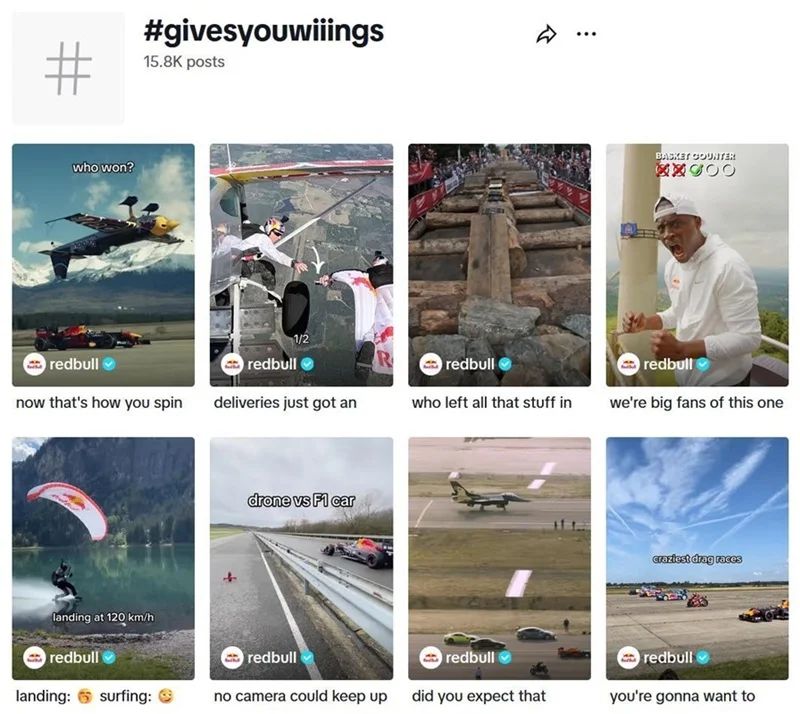
Red Flag #5. The surge in negative sentiment
Negative customer sentiment
A spike in complaints or negative reviews from your customers is, by far, one of the most dangerous signals in social media analytics you can’t afford to ignore. It’s perhaps the brightest indicator of customer dissatisfaction with your brand, product, or service.
Rhami Aboud, CEO at Arch Web Design says “first alarm bells warning you about a PR crisis on social platforms. The pivotal point here is that you must act immediately after discovering these high-risk signals to protect your brand’s online reputation, financial wellness, and legal status.”
To mention a few:
- #CustomerServiceFail
- #Disappointed
- #TerribleCustomerService
- #ScamAlert
- #Fail
- #[BrandName]Sucks
- #Boycott[BrandName]
Let’s take Nike’s promotional campaign with Colin Kaepernick, a rather controversial persona, several years ago. The brand saw a spike in negative sentiment with the #BoycottNike and #JustBurnIt hashtags (a play on the brand’s slogan “Just Do It”) on Twitter (X).
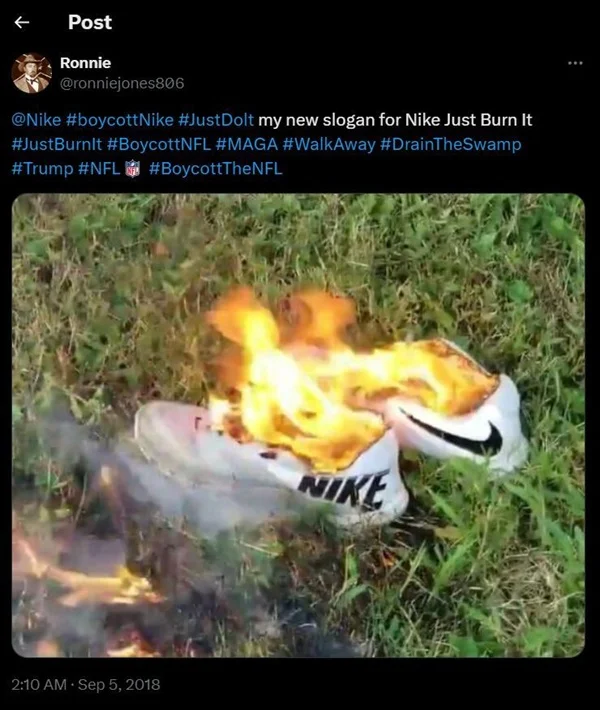
Negative employee sentiment
Samantha Brown, General Manager at Shout Media, argues that negative sentiments from employees are not less significant for employers. They tower as gigantic red flags in social media analytics and “reveal deep-rooted issues in the workplace you may not be aware of”:
- Toxic work environment (bullying, harassment, favoritism)
- Poor work-life balance
- Unfair pay
- Miscommunication
- Lack of team collaboration and support
- Interpersonal conflicts at work, etc.
Samantha Brown notes, “While talking about your company on social platforms, your workers not only shape customer perceptions but also throw light on your employer brand. More and more of today’s potential candidates research companies on social media. When they read negative comments from current or former staff, they may reconsider applying or accepting your job offer.”
Analyze Social Media and Spot Issues Before It’s Too Late
No need to drill down into social media depths with raw hands.
Onlypult can help you bring all social media red flags to the surface, work on them (optimize, schedule, and auto-post), and always be one step ahead of your competitors.
Try it out yourself!
